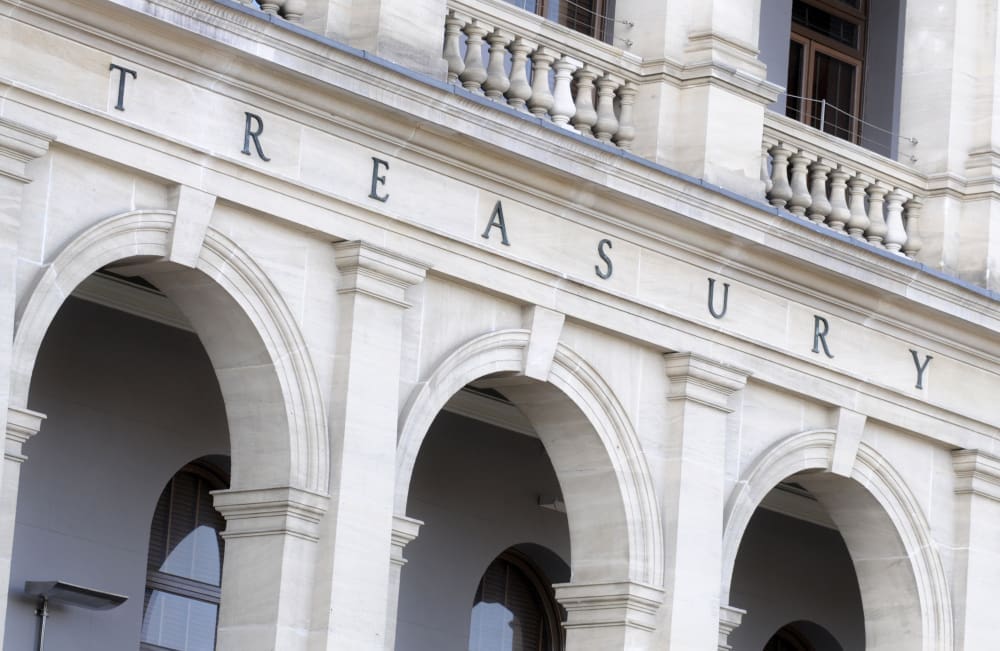The recent turmoil in the stock market has dominated headlines, but a more pressing issue is unfolding in another financial sector: U.S. government bonds are being abandoned by investors. Typically, economic uncertainty drives investors toward U.S. Treasurys, yet currently, even the potential for higher interest payments isn’t enough to attract buyers. This surprising shift has experts concerned that major banks, funds, and traders are losing faith in the stability and reliability of the United States as a secure investment haven.
“The fear is the U.S. is losing its standing as the safe haven,” said George Cipolloni, a fund manager at Penn Mutual Asset Management. “Our bond market is the biggest and most stable in the world, but when you add instability, bad things can happen.” This development doesn’t bode well for taxpayers funding the growing U.S. debt, consumers with mortgages or car loans, and President Donald Trump, who had hoped that a recent tariff pause would bolster market confidence.
Just last week, the yield on the 10-year Treasury stood at 4.01%. By Friday, it climbed to 4.58% before settling around 4.50%. Such fluctuations are significant for a market that typically experiences small percentage point movements. The implications for everyday Americans include potential increases in interest rates on mortgages, car loans, and other borrowing costs.
“As yields move higher, you’ll see your borrowing rates move higher, too,” said Brian Rehling, head of fixed income strategy at Wells Fargo Investment Institute. “And every corporation uses these funding markets. If they get more expensive, they’re going to have to pass along those costs to customers or cut costs by cutting jobs.”
U.S. Treasury bonds are essentially IOUs from the government, helping finance its spending beyond what revenue covers. While the exact cause of the bond market’s current instability remains uncertain, it is causing concern on Wall Street. Bonds usually move inversely to stocks, acting as a financial buffer during stock market slumps. However, this expected dynamic is currently failing, leaving investors puzzled.
The recent spike in bond yields was triggered by an unexpectedly negative consumer sentiment report, indicating fears of higher inflation. Other concerns include Trump’s tariff threats and volatile policy decisions, which have contributed to perceptions of an unpredictable and less stable U.S. economy.
“When the issue is a broader loss of confidence in the United States, even a much fuller retreat on trade might not work to bring yields down,” wrote Sarah Bianchi and other analysts at investment bank Evercore ISI. “We’re not sure any of the tools remaining in Trump’s toolkit will be sufficient to fully staunch the bleeding.”
U.S. Treasury Secretary Scott Bessent downplayed the yield spike as “an uncomfortable but normal deleveraging” occurring every few years. Similarly, President Trump expressed confidence, saying, “The bond market’s going good. It had a little moment, but I solved that problem very quickly. I’m very good at this.”
The bond market’s influence is evident as Trump acknowledged its role in his decision to pause tariffs for 90 days, noting that investors were becoming uneasy. The power of the bond market is well-known; it has previously influenced significant political outcomes, such as the resignation of the United Kingdom’s Liz Truss in 2022. Historically, U.S. Treasurys have been seen as a safe haven even in crises originating from the U.S., thanks to their liquidity and stability.
This time, however, that safety net seems absent. Several factors might be contributing to the bond sell-off, including speculation that China, a significant holder of U.S. bonds, could be retaliating by selling them. However, such a move would likely backfire by strengthening China’s currency and making its exports more expensive.
Another possible explanation involves hedge fund strategies using extensive borrowing, which may be under pressure, leading to a forced sell-off of Treasurys. “They are selling Treasurys and that is pushing up yields — that’s part of it,” said Mike Arone, chief investment strategist at State Street Global Advisors. “But the other part is that the U.S. has become a less reliable global partner.”
Wells Fargo’s Rehling remains cautious about a potential loss of confidence in the U.S., suggesting it’s too early for definitive conclusions and that the sell-off might soon cease.
The Ripple Effect: Navigating the Nuances
- Interest Rates Impact: Rising Treasury yields could lead to increased interest rates for mortgages, car loans, and other consumer borrowing, affecting household budgets and purchasing power.
- Market Confidence: The current bond market instability may undermine investor confidence in the U.S. economy, potentially influencing global financial markets and economic policies.
- Employment Uncertainty: As borrowing costs rise, corporations might reduce costs by passing them on to consumers or cutting jobs, impacting employment stability and growth.
- Government Debt Management: Higher yields increase the cost of servicing the national debt, potentially affecting government spending and fiscal policies.
- Global Relationships: The perception of the U.S. as a less stable economic partner could influence international trade and diplomatic relations, altering global economic dynamics.
- Consumer Sentiment: Negative reports on consumer sentiment and inflation expectations can further drive economic uncertainty and affect consumer spending behavior.








